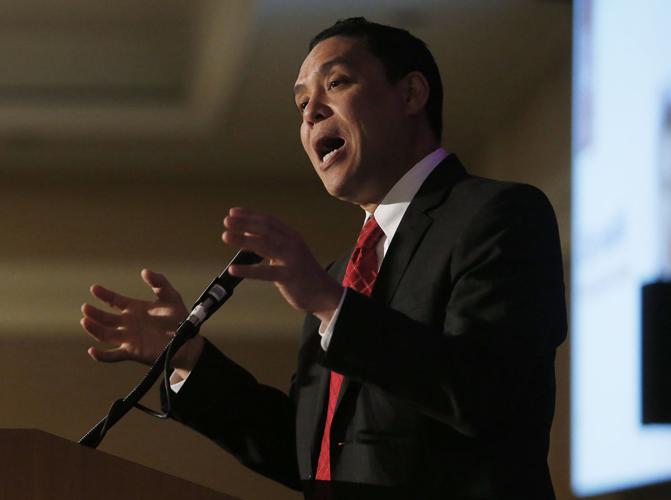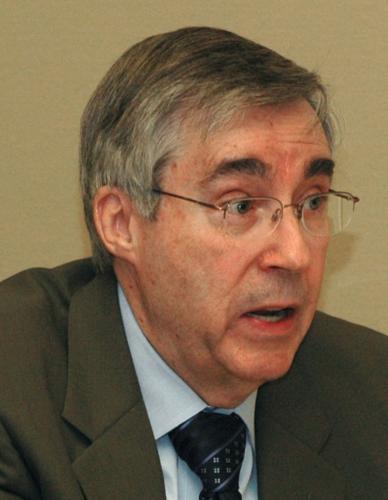Arizona should see continued job growth and a lower unemployment rate this coming year according to two economists.
But some of that could depend on whether the Donald Trump who ran for president is the same one who takes office on Jan. 20.
Lee McPheters, economics professor at the W.P. Carey School of Business at Arizona State University, said that when the final figures are in for this year the state will have added about 76,000 jobs. And he figures Arizona should create another 81,000 in 2017.
McPheters, one of the presenters at the school’s annual economic forecast luncheon on Monday, said that should be good enough to drop the seasonally adjusted jobless rate by the end of next year to 4.8 percent. The most recent report has the state at 5.2 percent.
But McPheters cautioned that much of the state’s future is tied to what policies the Trump administration puts in place. And key to that is trade, with Trump having campaigned on policies of blowing up existing agreements, notably the North American Free Trade Agreement, and renegotiating them on terms he believes are more favorable to the United States.
“Certainly, Arizona being a border state would be affected by restrictions on trade,” McPheters said. “I mean, this just seems to be going in the wrong direction.”
McPheters also said that Trump’s promise to repeal the Affordable Care Act would leave millions of Americans without health insurance unless it is replaced with something suitable.
“That would really slow down a key engine of growth for Arizona,” he said, pointing out that the state’s health care sector was the only one that didn’t shrink during the recession. “We’re No. 5 in the country in the rate of growth for health care jobs.”
But Anthony Chan, chief economist for JPMorgan Chase, said he’s not convinced that all the rhetoric of candidate Trump about international trade will translate into policies under President Trump.
“I am concerned,” he said. “But I don’t really think that I hear that message as loud from a lot of the president elect’s top economic advisers.”
And to the extent those statements continue, Chan isn’t taking that as an indication of a major shift in trade policies but more rhetoric.
“I do hear a signal or a message that they may be using some of these things as negotiation tactics,” he explained. “It’s, as some might say, an opening bid.”
Chan said he expects the new president and his advisers to “walk that fine line and see how much they have to push to put forth their America First agenda.”
“And there’s nothing wrong with that,” he said — up to a point.
“If they go into the dark side and all of a sudden the trade issues become a trade war, it’s not good for the U.S.,” Chan said. “But it’s not good for any part of the world, either.”
The soft spot in the economy remains single family housing.
McPheters is predicting fewer than 30,000 permits will be issued in 2017, a figure still far below the pre-recession norm of from 50,000 to 60,000.
Some of that, he said, can be blamed on a shortage of qualified labor. But McPheters said to a certain extent that’s a problem created by the builders themselves.
“You can’t find quality workers at the wages they’re willing to pay,” he said.
There are other factors, including rising interest rates. Chan said mortgage costs already have gone up by 70 basis points — 0.7 percent — since the election.
“That’s simply a reflection of the fact there’s going to be a lot more stimulus, a lot more demand for credit, than you otherwise would have had under a different candidate,” he explained. And more borrowing raises rates.
But McPheters said there’s something else: The folks coming of age now — the millennials — just aren’t as interested in buying a home as their parents.
“They prefer an urban lifestyle,” he said. “They like to delay marriage.”
He said demographic statistics bear that out.
In the 1970s, close to 50 percent of those 18 to 34 were married and had kids. That figure is now in the 20 percent range.
“So family formation is really slow,” McPheters said. And he said most millennials “don’t see housing as a good investment.”
One thing both economists are watching is what happens when the state’s minimum wage, now $8.05 an hour, goes to $10 on Jan. 1 because of voter approval of Proposition 206. That initiative eventually will put the wage floor at $12 an hour by 2020, with inflation-indexed increases in succeeding years.
McPheters is not convinced there will be major displacement as small businesses have to pay more. In fact, he sees positive benefits.
“With a higher minimum wage you would expect to see turnover reduced, which is beneficial,” he said.
“In some of these minimum wage jobs, turnover rate approaches 75 percent” a year, McPheters continued. “That ought to bring down turnover rate, which is favorable for profits.”
McPheters conceded it’s hard to make predictions.
“We don’t have laboratory experiments in economics,” he said. But he said the experience in Seattle, which raised the minimum wage this past January to at least $12 now, en route to $15 for some companies in January, has suggested that the picture of major problems has not materialized.
“Employment went up over the year and the unemployment rate continues to go down,” he said.
Chan said there will be some employment disruption, particularly in industries that can replace workers with technology. But he said the state’s declining unemployment rate likely would force have forced companies to pay more for workers anyway.





